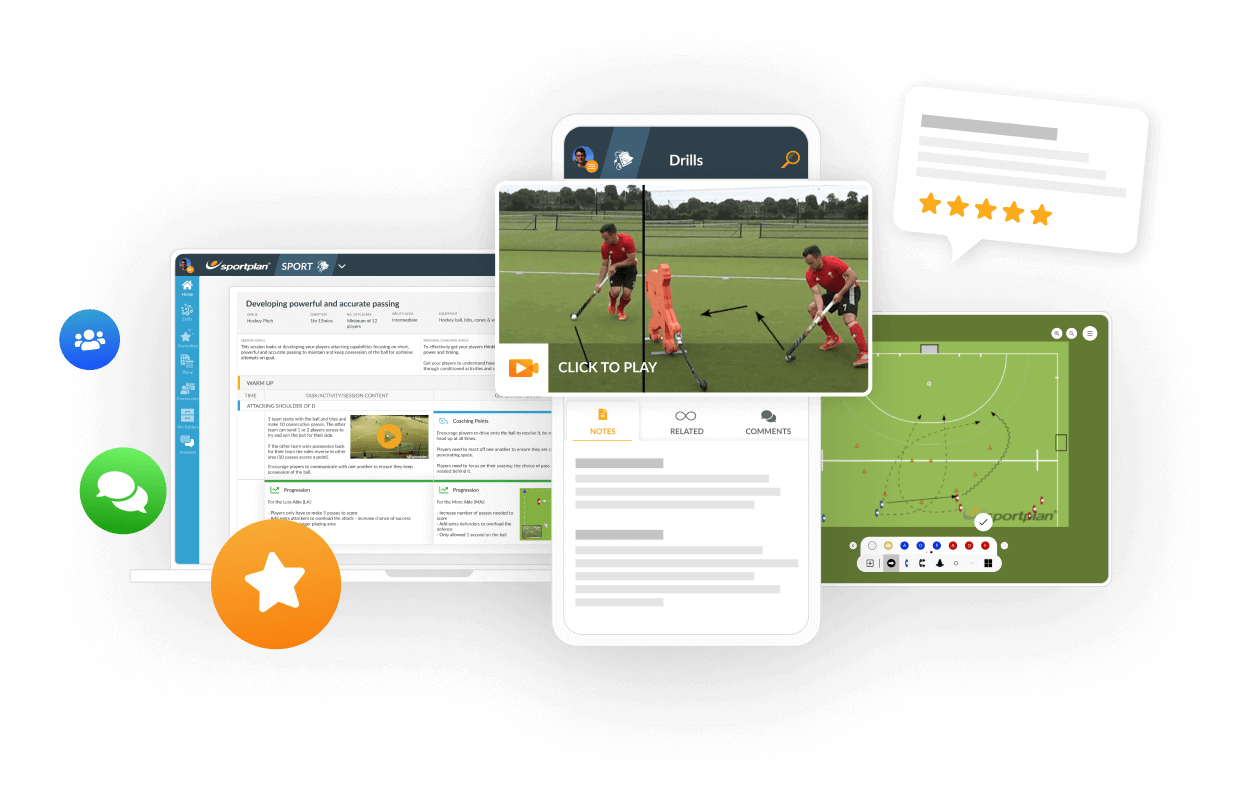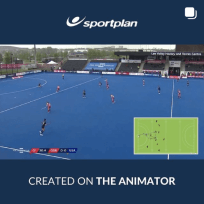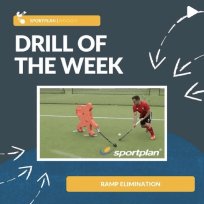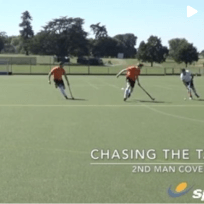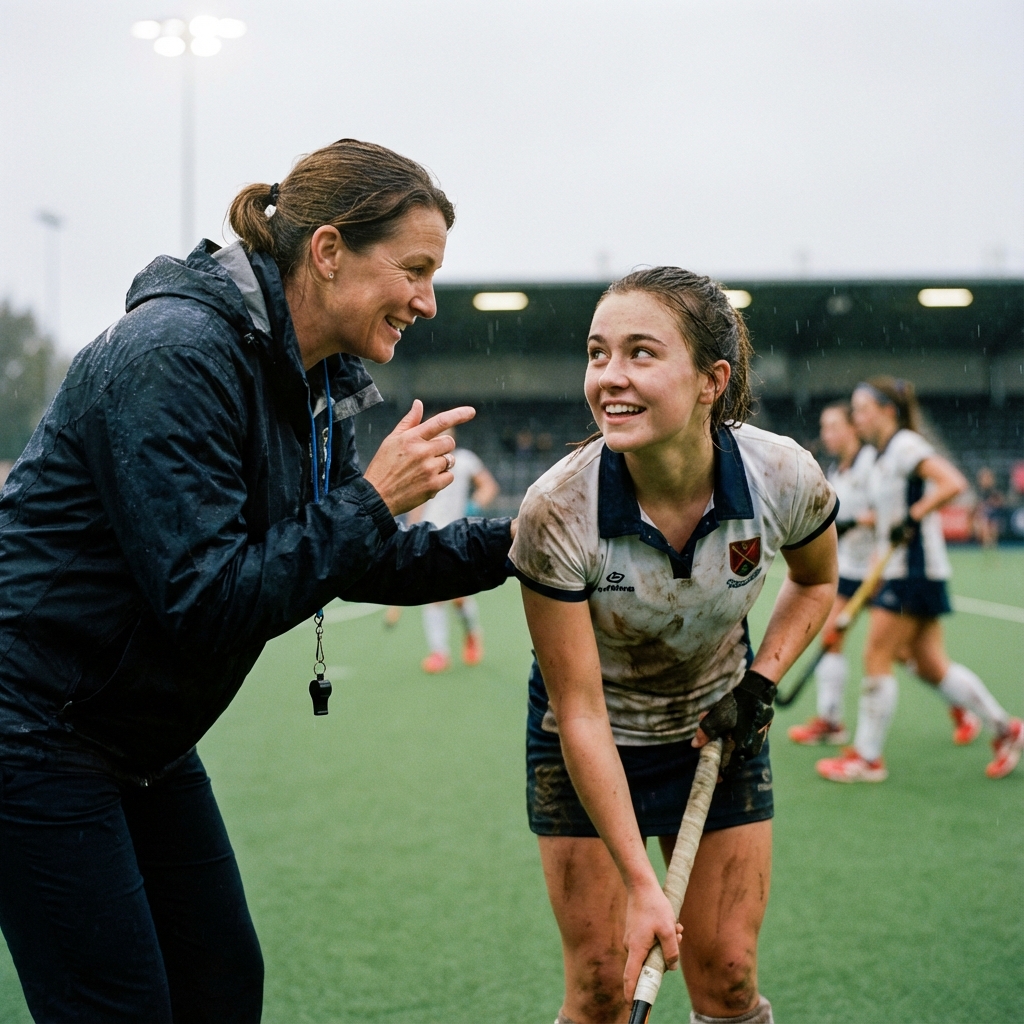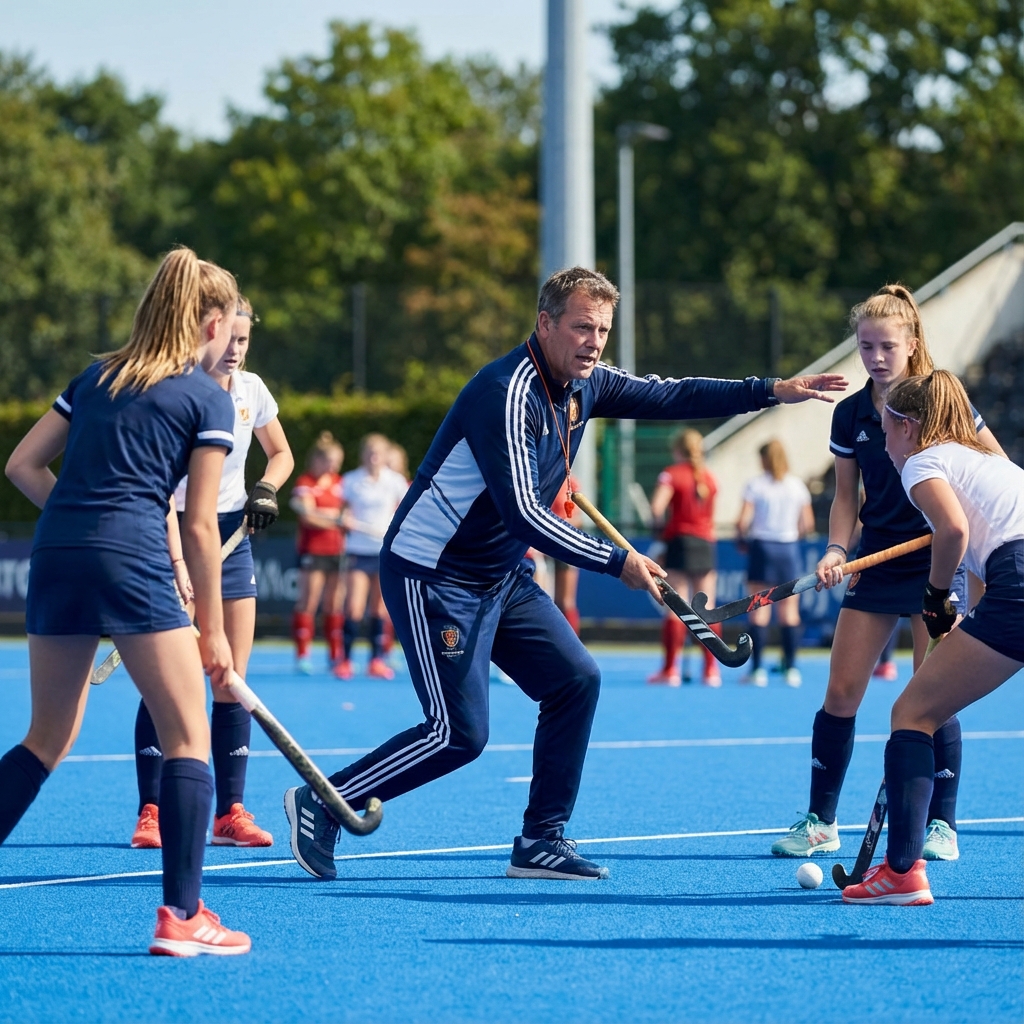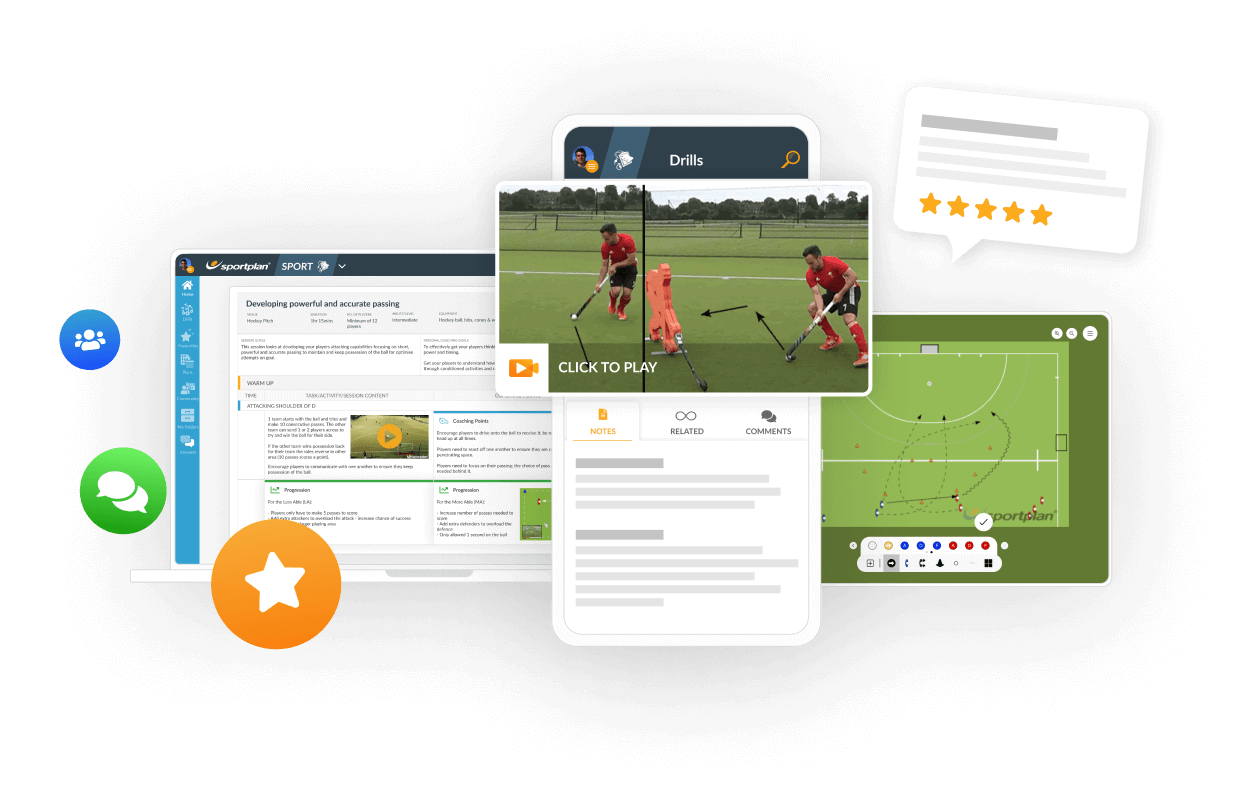Who marks the player with the ball when marker is beaten?
A player beats their defender. Do I leave my player to defend as I am nearest to the ball, or should I stay and hold my position?





Good question.
It depends entirely on the situation and the strategy of the defending team.
Players should basically work to a set of priorities. Many years ago David Whittaker (Olympic Gold Medal Winning Coach) listed the priorities as follows - they have not changed and never will.
They are:-
- STOP ANY INCISIVE PASSES (or a shot)
- STOP FORWARD MOVEMENT
- LIMIT PASSING OPPORTUNITIES
- FORCE ATTENTION ONTO THE BALL
- DIRECT TOWARDS OTHER DEFENDERS OR
- LESS DANGEROUS AREAS
- DELAY TACKLING UNTIL COVER IS AVAILABLE
Let's discuss a couple of situations. A midfield player eliminates their opposite number and carries the ball towards goal from 40 yards out. Who should close him down? If we assume the forwards are marked, one of the central defenders should be free playing the sweeping role (positioned in front or behind the defence) and can close down. Having said that, if a deeper lying central midfield player (old fashioned Centre Half) is present he may be nearest and able to "seal the wound." This assumes the opposition centre midfield is deep.
One of the more interesting situations is when an attacking player beats a defender and enters the circle, lets say from a fairly narrow angle. Should the goalkeeper close down or should a marking defender close down leaving another forward unmarked? You will get different answers from different coaches based essentially on where in the world you are playing. Countries that base their game on a man to man philosophy will send the Goalkeeper and he will delay the forward whilst other defenders recover to help. Essentially, the forwards 1 v 1 skills against the goalkeeper are put to the test.
On the other hand, goalkeepers from more zonal marking countries will call a player to close down and seek to pressurise the trap and/or smother the shot when the ball is passed to the free forward.
Neither solution is right or wrong what is critical is that everyone knows what is going to happen and reacts accordingly.
Good question.
It depends entirely on the situation and the strategy of the defending team.
Players should basically work to a set of priorities. Many years ago David Whittaker (Olympic Gold Medal Winning Coach) listed the priorities as follows - they have not changed and never will.
They are:-
- STOP ANY INCISIVE PASSES (or a shot)
- STOP FORWARD MOVEMENT
- LIMIT PASSING OPPORTUNITIES
- FORCE ATTENTION ONTO THE BALL
- DIRECT TOWARDS OTHER DEFENDERS OR
- LESS DANGEROUS AREAS
- DELAY TACKLING UNTIL COVER IS AVAILABLE
Let's discuss a couple of situations. A midfield player eliminates their opposite number and carries the ball towards goal from 40 yards out. Who should close him down? If we assume the forwards are marked, one of the central defenders should be free playing the sweeping role (positioned in front or behind the defence) and can close down. Having said that, if a deeper lying central midfield player (old fashioned Centre Half) is present he may be nearest and able to "seal the wound." This assumes the opposition centre midfield is deep.
One of the more interesting situations is when an attacking player beats a defender and enters the circle, lets say from a fairly narrow angle. Should the goalkeeper close down or should a marking defender close down leaving another forward unmarked? You will get different answers from different coaches based essentially on where in the world you are playing. Countries that base their game on a man to man philosophy will send the Goalkeeper and he will delay the forward whilst other defenders recover to help. Essentially, the forwards 1 v 1 skills against the goalkeeper are put to the test.
On the other hand, goalkeepers from more zonal marking countries will call a player to close down and seek to pressurise the trap and/or smother the shot when the ball is passed to the free forward.
Neither solution is right or wrong what is critical is that everyone knows what is going to happen and reacts accordingly.







